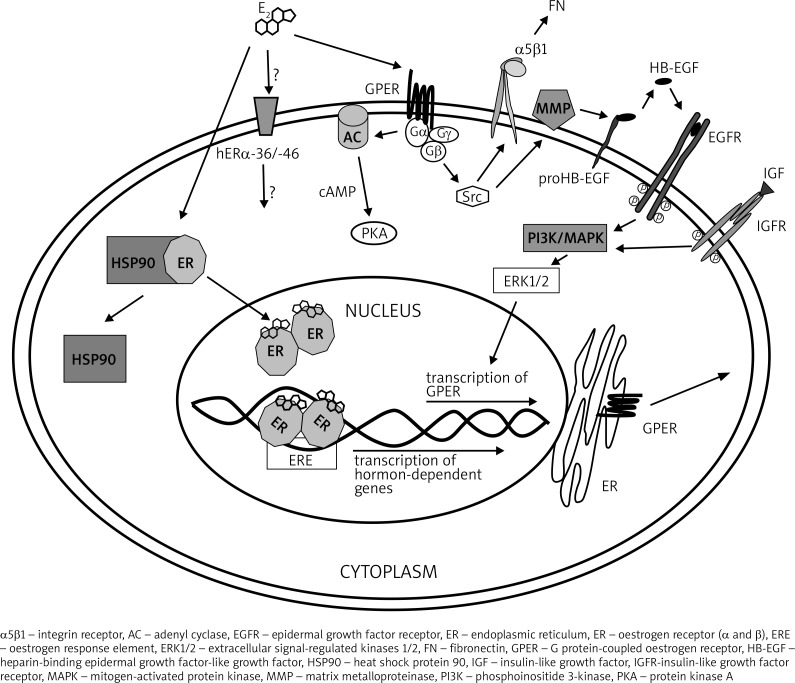Fig. 1.
The mechanism of oestrogen action. The binding of E2 to the classical ERα or ERβ receptors leads to transcription of hormone-dependent genes. The third possible ER, GPER, is a membrane receptor, which is suggested to be responsible for non-genomic E2 action. Activated GPER triggers the clustering of α5β1 integrins, which in turn leads to the assembly of fibronectin matrix. Oestrogen action via GPER is enhanced by the presence of the IGFR-ligand complex, which results in stimulation of the GPER gene transcription. The GPER activation promotes also transactivation of EGFR, resulting in activation of signalling pathway, also leading to GPER gene transcription. Another possible way of E2 action is through hERα-36/-46, which are shorter isoforms of ERα localised in plasma membrane. Their function is not yet fully understood

